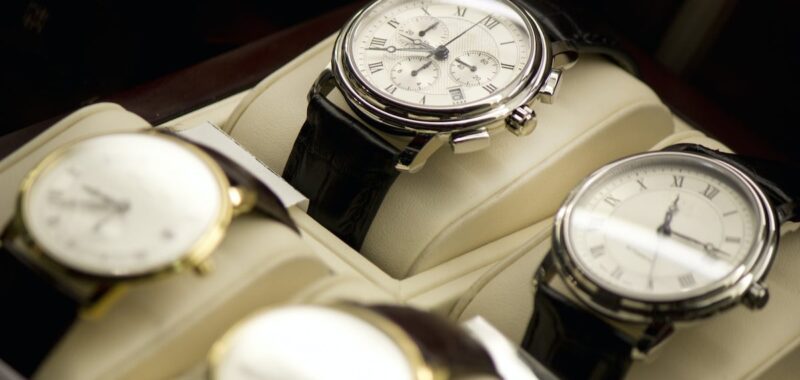
Swiss watchmaking is contracting, increasingly polarised and shedding volumes fast. That’s according to Morgan Stanley’s Swiss Watcher, the annual industry report released Monday by the US investment bank’s research division.
The influential report portrayed an industry now in decline after its post-pandemic boom, which led to record export values in 2023.
It pointed to continuing problems in the Chinese market, which recorded a 23 percent drop in export values, as well as the ongoing challenges posed to the lower end of the market by rising prices. The headwind from losing customers to smartwatches and fitness trackers remains a challenge, but is thought to be tailing off, according to the report.
Some brands experienced sharp declines, with four estimated to have lost more than 20 percent of their turnover year-on-year: Hublot, which is owned by French luxury conglomerate LVMH; Swatch Group brands Breguet and Longines; and Tudor, part of Rolex, whose sales crashed 34 percent to 360 million Swiss francs ($400 million), making it the worst performer among the 50 brands tracked by the report.
Longines’ performance appeared to reflect the industry trend towards lower volumes. The Swiss brand, which sits alongside Omega and Tissot at Swatch Group, sold an estimated 1.6 million watches in 2023. Last year, that figure had plummeted to 950,000. It clung to its position as one of the so-called Billion Swiss Franc Club, however, with revenues of 1.12 billion Swiss francs roughly in line with last year—indicating a focus on higher value watches.
It also appeared the MoonSwatch bounce was over. For the past three years, Swatch’s annual sales had been bumped up by its $270 version of Omega’s $8,000 Speedmaster Professional (known as the Moonwatch because of its role in NASA’s lunar landings). But after selling an estimated 5.8 million of the accessibly priced plastic watches in 2023, last year Swatch’s sales had dropped back to 4.9 million units.
One of the report’s co-authors said the figures should serve as a wake-up call for the industry. “The downturn isn’t a blip, it’s a trend,” said Oliver Müller, founder of the Swiss watch industry consultancy LuxeConsult. “We will never get back to a volume industry. We’re in the high-end now. But this is a problem on an industrial basis. You can’t have an industry living on Porsches and Lamborghinis, you need an industrial base for volume.”
Still, there were winners last year. Rolex, Patek Philippe, Audemars Piguet and Richard Mille, referred to in the report as the “Big Four” largest privately owned watch companies, now account for 47 percent of the market, up 10 percent since 2019. Each saw sales climb in 2024.
With the exception of Rolex, which the report said produced almost 1.2 million timepieces, each of these is known for producing a limited quantity of very-high-value watches each year. Audemars Piguet is thought to have made 51,000 watches in 2024, against revenues of 2.38 billion Swiss francs, implying an average retail price per watch of 49,075 Swiss francs.
The report noted that sales of watches with a retail price of more than 50,000 Swiss francs now accounted for 34 percent of Swiss watch exports and 84 percent of industry growth in 2024. Yet, the category accounted for just 1.2 percent of export volumes.
One trend highlighted by the report is that brands with both watch and jewellery product portfolios outperformed the market. Cartier, Van Cleef and Bulgari are all estimated to have increased volumes in 2024 despite a rocky luxury market. Müller confirmed Bulgari chief executive Jean-Christophe Babin’s assertion in a recent interview that the LVMH-owned brand’s watch division experienced double-digit growth last year.
“It’s partly brand rub-off,” said Müller, “but it’s also because they’re doing a very good job, especially at Cartier. They’re not doing anything disruptive, but they don’t need to. But the jewellery category continues to grow faster overall than watches.”
Morgan Stanley’s figures followed the Federation of the Swiss Watch Industry’s annual results at the end of January. Its reports are based on foreign trade statistics prepared by Switzerland’s Federal Customs Administration, which indicated that in 2023 Swiss watch exports declined 2.8 percent by value and 9.4 percent by volume to 15.3 million units. The number of watches exported from Switzerland had halved since 2011, according to FHS data.
Last year’s decline may only be the beginning of the story. According to industry insiders, watch inventory for some volume brands is piling up in retailers as consumers stay away. “My prediction is that in the long-term the industry will be down to maybe 12 million watches, which means that there will be very few volume brands,” said Müller.

